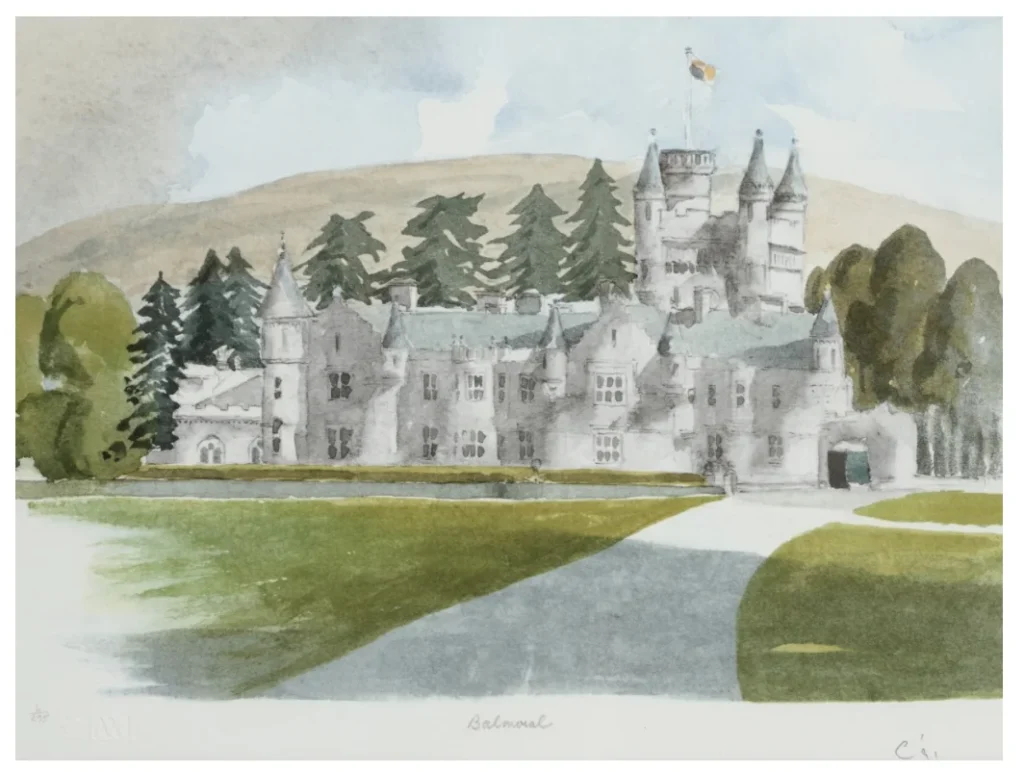Introduction to the Artwork
“Balmoral” is one of King Charles III’s most recognized watercolor paintings, capturing the beauty of Balmoral Castle, the royal family’s beloved Scottish retreat. Painted in 2001, the artwork reflects the monarch’s passion for painting and his deep connection to Scotland, where Balmoral is located.
Inspiration Behind the Painting
Charles has been painting for over five decades, drawing inspiration from his surroundings, especially landscapes. In “Balmoral,” the King expressed his fascination with the castle’s architectural complexity and the contrast between man-made structures and nature. He found the play of shadows and the castle’s gables particularly captivating.
The Medium and Technique
King Charles primarily works in watercolors, a medium that allows for delicate and detailed representations of light and nature. His painting of Balmoral balances the intricate design of the castle with the surrounding Highland scenery, emphasizing the connection between the natural and built environment.
The Painting’s Legacy
Though the original painting holds significant personal and artistic value, it is prints of the work that have captured public attention. A signed lithograph of “Balmoral” fetched more than £5,000 at an auction in 2022, far exceeding its original estimate. Limited to 100 prints, this artwork holds a special place in royal art collections.
Conclusion
“Balmoral” is more than just a painting; it represents King Charles III’s dedication to the arts and his personal connection to the Scottish landscape. Through his watercolors, he shares a unique perspective on nature and royal life, cementing his legacy as both a monarch and an artist.

